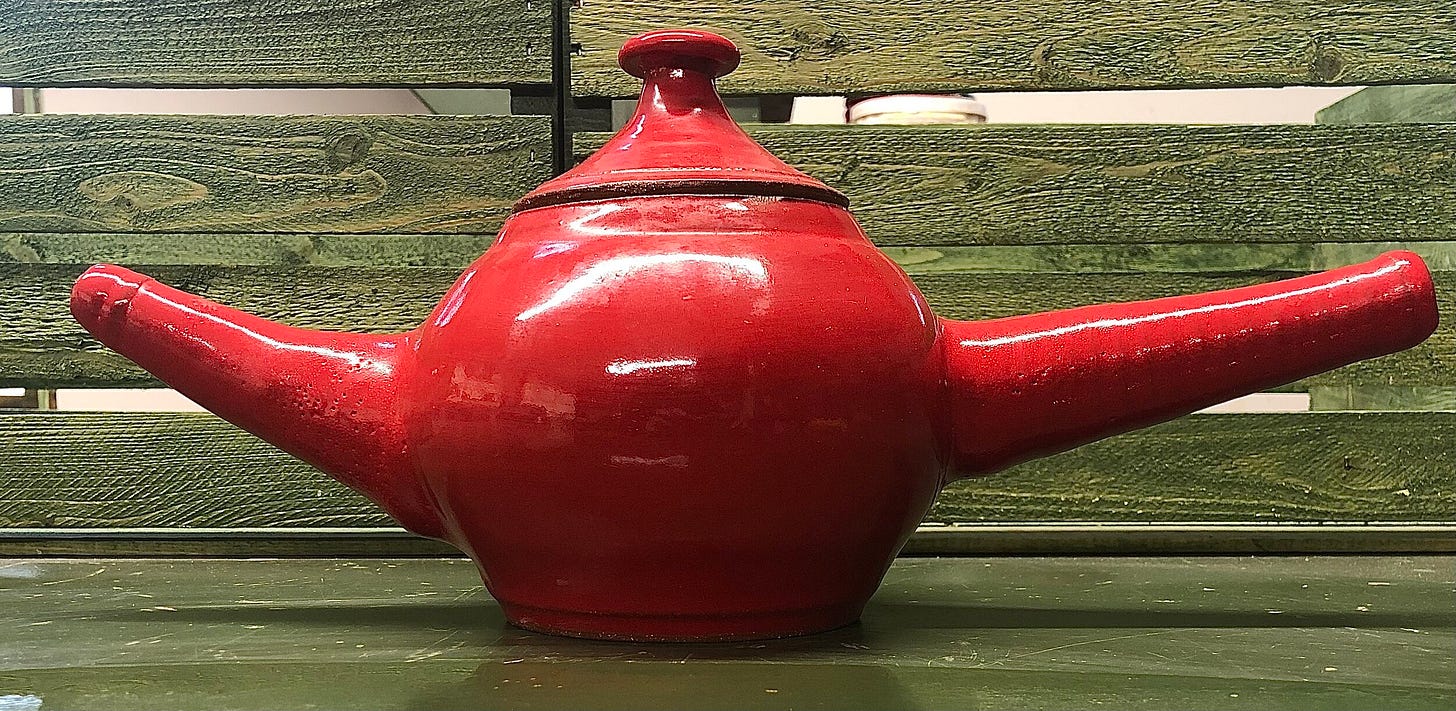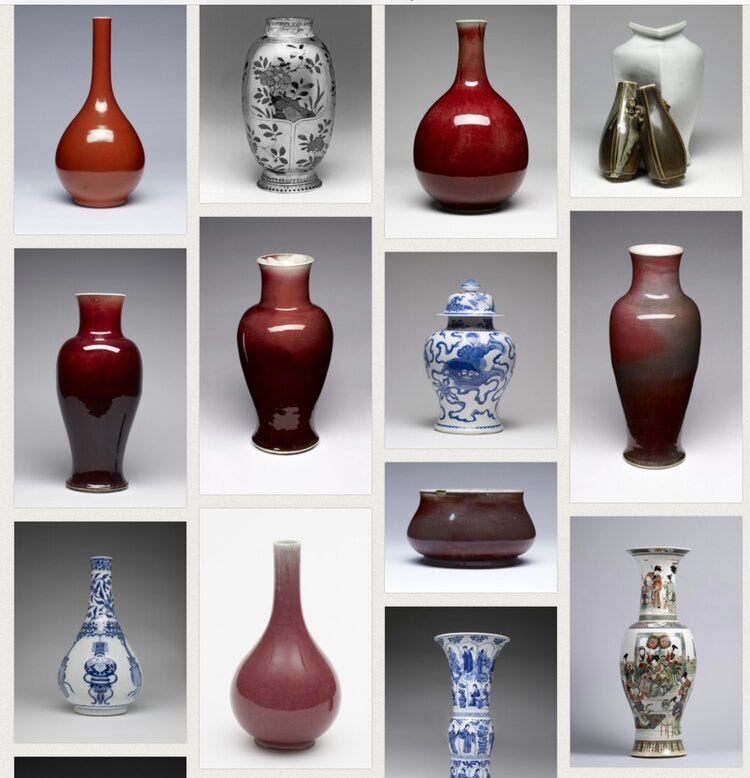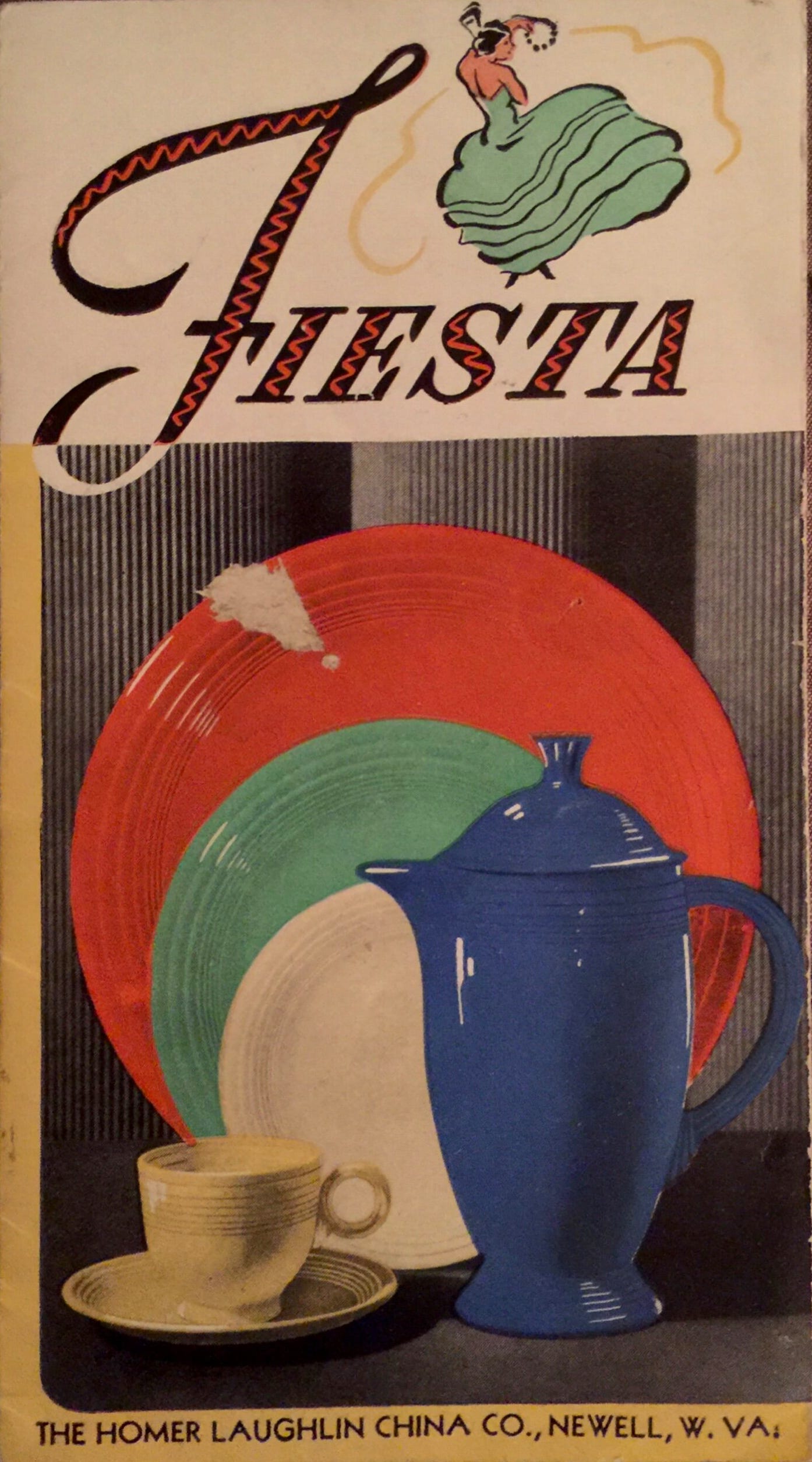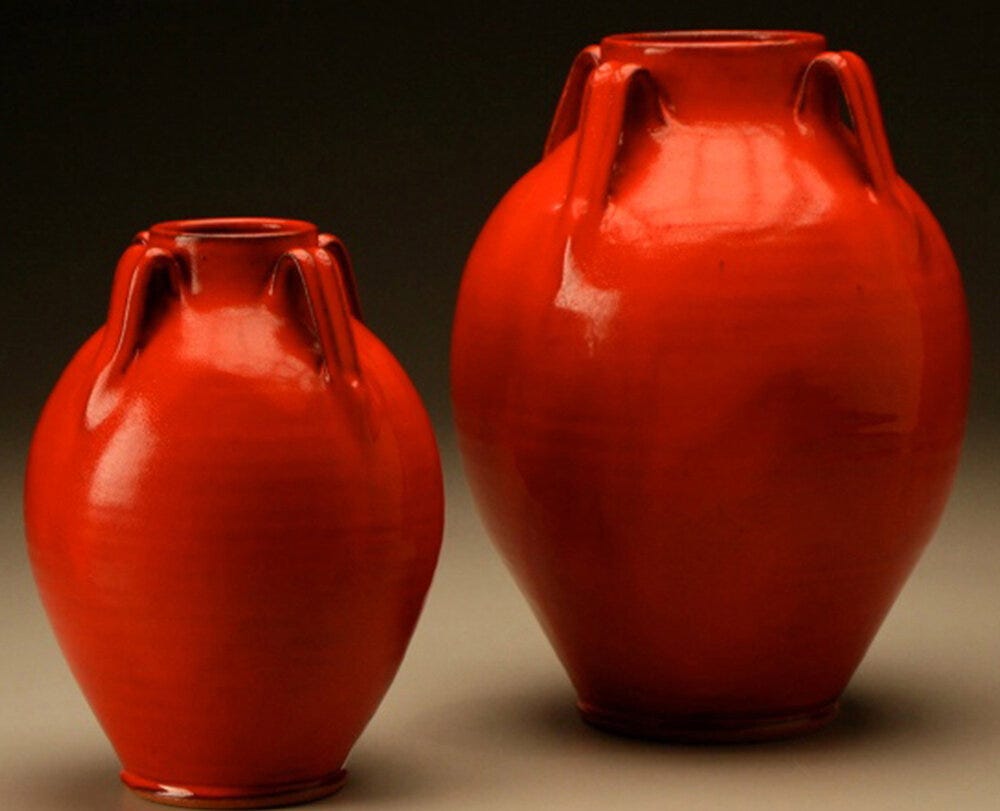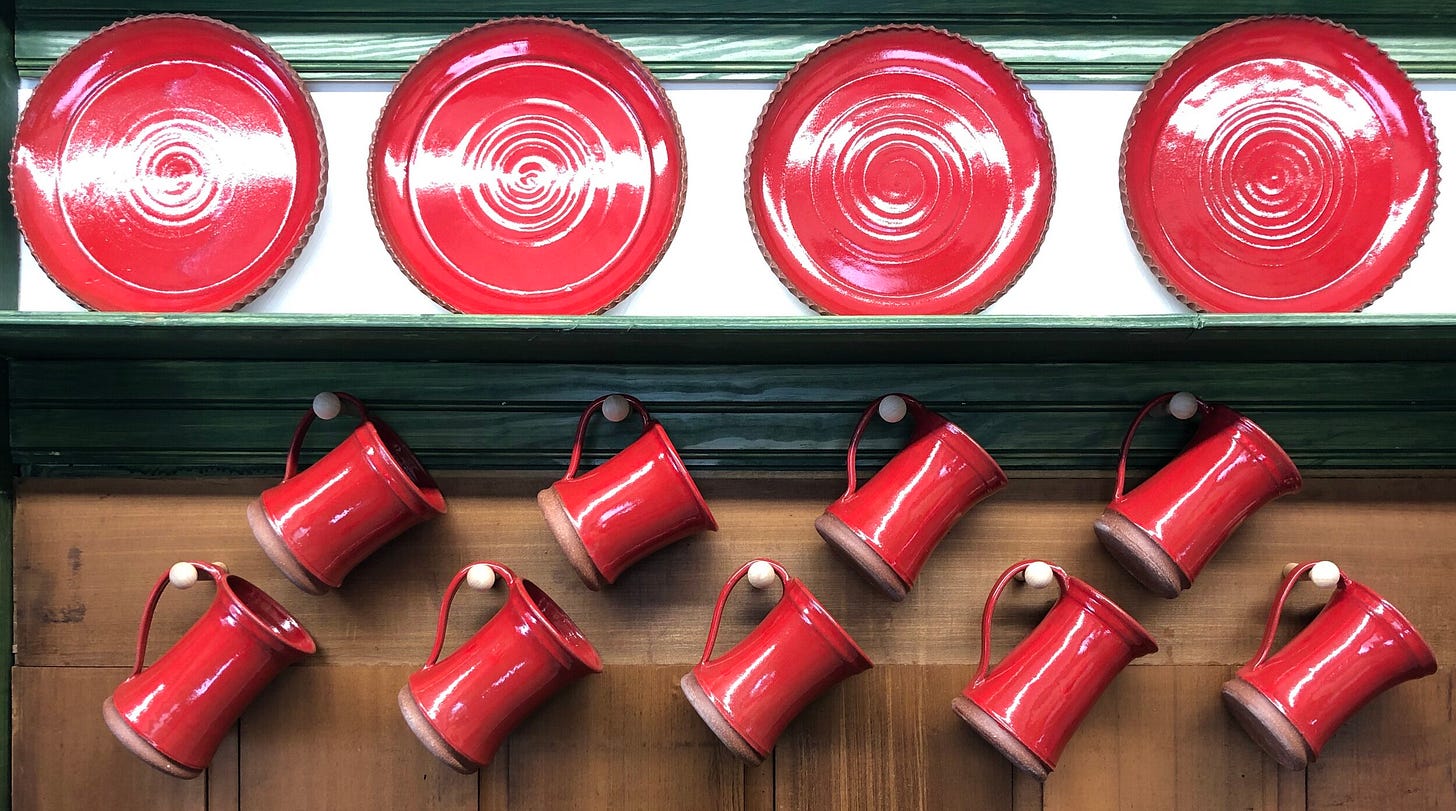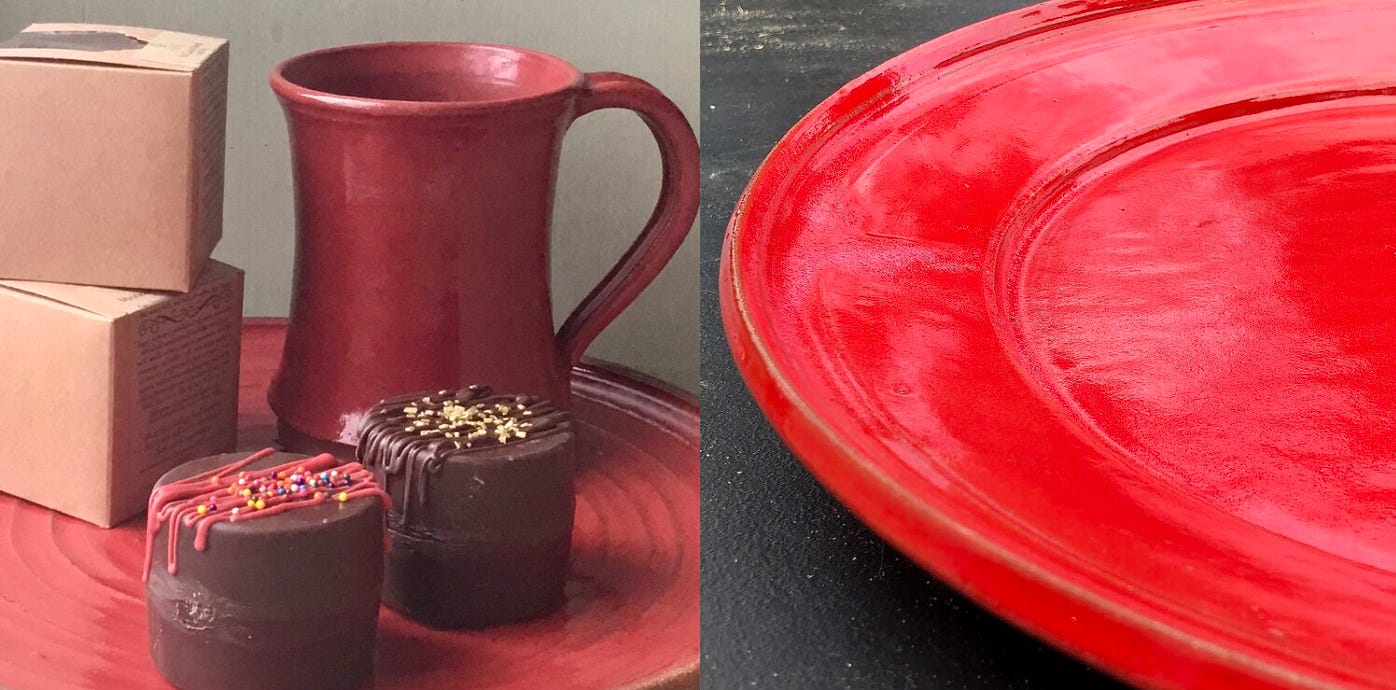"And to my lips' Bright crimson rim The passion slips, And down my slim White body drips The shining hymn." ~ D. H. Lawrence
Mike Pugh: Red Teapot, 2017
Today is Valentine’s Day, and we just returned from delivering red mugs around town. Ice rained on our sidewalk pop up yesterday, so we had to pack-up. As soon as we returned to the farm, anxious red pottery requests began to arrive on the eve of Love’s Day.
So what is our passion for the color red on pottery? If you look around, you won’t find any antique pottery in bright, Chinese red glaze. Surprisingly, it’s a rare color that’s enormously difficult to achieve in glazes. We’ve only been able to replicate the guarded recipes of the Chinese Qing Dynasty and create dependable (and not poisonous) modern red glazes during my lifetime. That’s a moment in the long history of pottery. Before that, studio potters struggled through unpredictable results or employed ingredients that could be deadly. One old saying is, “If you want to go broke as a potter, try to get a red glaze.” And many generations of potters did go broke, or worse, in this pursuit of a beguiling crimson. If you’ve ever tried to achieve a perfect red on a wall, you’ll understand some of the frustration. But what about Grandma’s red Fiestaware from the 1930’s? Keep reading.
Chinese porcelains from The Walters Art Museum, Baltimore. Figure is likely from Ming period of “Sacrificial Red”, and vases date from Qing Dynasty of “Ox Blood Red”. Source:
https://thewalters.org
There’s a Chinese legend of a weary potter in the late 1600’s who threw himself into his kiln because he couldn’t replicate the rare crimson-red vessels of the Ming Dynasty (c.1420). When the kiln was opened, the potter’s wares were all red! The assumption is that the iron in the potter’s blood was the secret ingredient to turn glaze red. It’s not that simple; not even close.
Carmen Grasso and I got to talking about this Saturday, and he inspired me to do a little research. Ironically, the early Ming red is called “Sacrificial Red” because the Ming emperor kept the red-glazed vessels for animal sacrifices in sun worship. The Chinese associate red with the Sun. The secret for this sacrificial red was lost until modern science could decode found sherds via spectrometry. When the Qing emperor demanded a rediscovery of the sacrificial red glaze a few hundred years (and a dynasty) later, his potters happened upon a glaze we call ox blood red.
Ox blood red is created with copper and tin (not oxen or blood). The kiln is heated to a very-specific temperature without ventilation (Reduction) so the copper changes on a molecular level. The oxygen is introduced as the kiln cools in a highly-controlled manner. If this process isn’t performed exactly, the glaze will turn clear, purple, brown, or even green (copper creates the green in most glazes). Chinese Porcelain vases with this complex crystal glaze of varying colors of red are highly prized. You can see some priceless examples at The Walters Art Museum. To most of us, the monochromatic red vases are easily passed-over because of the glaze secrets we now take for granted. In fact, they were enormously prized and guarded by emperors. Just imagine the miracle Chinese potters achieved with a wood-fired kiln, no thermometer, and no knowledge of the science of Chemistry. Astounding!
William de Morgan Lusterware Tiles based on modern gothic William Morris designs. Lusterware is low fired, contains lead, and therefore is not food safe. Source: https://www.demorgan.org.uk
Here in the West, we were essentially out-of-luck with crimson-red ceramic glazes until fairly recently. A sallow brick red was created with iron (rust), and sometimes copper created burgundy or was used with tin/silver for a silvery red called lusterware (imported from Persia during the Italian Renaissance). It’s why we associate studio pottery with the earth tones of the Arts & Crafts Movement, even today. I believe it’s why many studio potters look down their noses at the hot reds that some potters use today. It lacks the depth or complexity we find in common glaze palette because it’s an industrially-produced color of the modern age.
1937 Fiestaware brochure, featuring first vibrant collection. Source: https://www.drivingfordeco.com/fiesta-turns-80/
Ohio River pottery manufacturer, Homer Laughlin, came out with Fiestaware in 1937. It captured the vibrant hues of Art Deco, and it brought cheer to the dreary realities of the Great Depression. California pottery manufacturers came up with pastel and vibrant colors in the 1920’s, but Fiestaware introduced a new Chinese red along with blue, green, ivory, and yellow. The radiant glazes were actually made with Uranium Oxide: as much as 14% in the red glaze! Uranium Oxide and heavy metals such as chromium were introduced into glazes to engineer a new palette of primary and secondary colors. The atomic age was born in radioactive pottery manufacturing. Uranium was taken away from Fiestaware during the Second World War to initiate the Nuclear Age, but it came back in 1959 using depleted uranium. This continued until 1973! Even today, old Chinese red Fiestaware will set off a Geiger counter. It’s not a good idea to eat off old Fiestaware, particularly the Chinese red we covet so much.
Pastel Fiestaware made a comeback in the 1980’s, but it didn’t have red because it couldn’t be produced until new, non-radioactive or nontoxic, techniques were invented industrially.
Red pottery from Seagrove, NC. Left: Jugtown candlesticks by Vernon Owens. Source: https://www.pottersmarketatthemint.com/jugtown-pottery-vernon-owens-2018 Right: Ben Owens III Chinese-inspired jug vases. Source:
https://benowenpottery.com
The sort of pottery I make is in the tradition of Seagrove, North Carolina. In 1923, Jacques and Juliana Busbee founded Jugtown to preserve the dying NC pottery traditions. They sold their folk pottery in The Village in NYC, and it developed a demand that has continued to the present. We associate this folk pottery with earthy redware and functional clear-brown glazes.
The Busbees started to work with younger NC potters to develop new vibrant glazes and Chinese-inspired forms that would appeal to the modern markets in Art Deco Manhattan. They created glazes called Cinnamon, Frog Skin, and Tobacco Spit that parted from traditional functional salt glazes. Ben Own Sr. Was one such young potter who participated in the “translated traditional pottery” of the Busbees. And yes, the red of the 1930’s entered the Jugtown palette (actually more of a pumpkin). This created a sort of divergence in the future of North Carolina folk pottery and the studio pottery that comes from the Jugtown traditions (like mine). Owens decedents work on both sides of the traditional divergence with the old ways and fresh translations. Today, Ben Owns III is celebrated internationally for his Chinese red pottery that draws from the Jugtown traditions and techniques of his grandfather.
Mike Pugh, Red Paulineware plates & mugs, Valentine’s Day 2021.
Today, modern Chinese red glaze is associated with Seagrove, NC and the Owens potters because of the Fiestaware spirit of pottery that inspired Jugtown in the 1930’s and after WWII.
My own Really-Red glaze is applied to red clay in the same spirit. I love how it breaks to reveal the subtle cuts and finger spirals in the red clay beneath. It’s entirely earthy and comforting like knitted socks or hot chocolate. Today’s bright red glaze is more of an engineered amalgamation of stains and stable components that make it food safe. To be honest, modern vibrant red glaze lacks the mystery, microcrystalline complexity, or dismal failure rate of the old ox blood glazes. I may still go bankrupt making red pots (as the old saying goes), but there’s no desire to jump into the kiln out of frustration. The vibrant red remains rare among studio potters because the glaze is just too darn expensive to purchase. I keep it as a special treat for the holidays, just like people do with top shelf moonshine. The cheap red dishes you see at the store are generally painted with a red underglaze to cut costs. You’ll notice they chip easily too, but that’s a conversation for another day.
So, when you behold a piece of studio pottery in vibrant red glaze, please think for a moment about its rarity and value in the history of ceramics. Next, just enjoy the seductive power that red has over you. Happy Valentine’s -Mike
If you’d like to comment, please click the title of this post and scroll-down to the box. Thanks!
Mike Pugh’s Red Pottery with Hot Cocoa Bombs by Mariam Satchell’s THE SPICERIE:
https://www.thespicerie.com/?v=7516fd43adaa
and platter for James’ birthday (from Richard), Chestertown, MD. 2021




